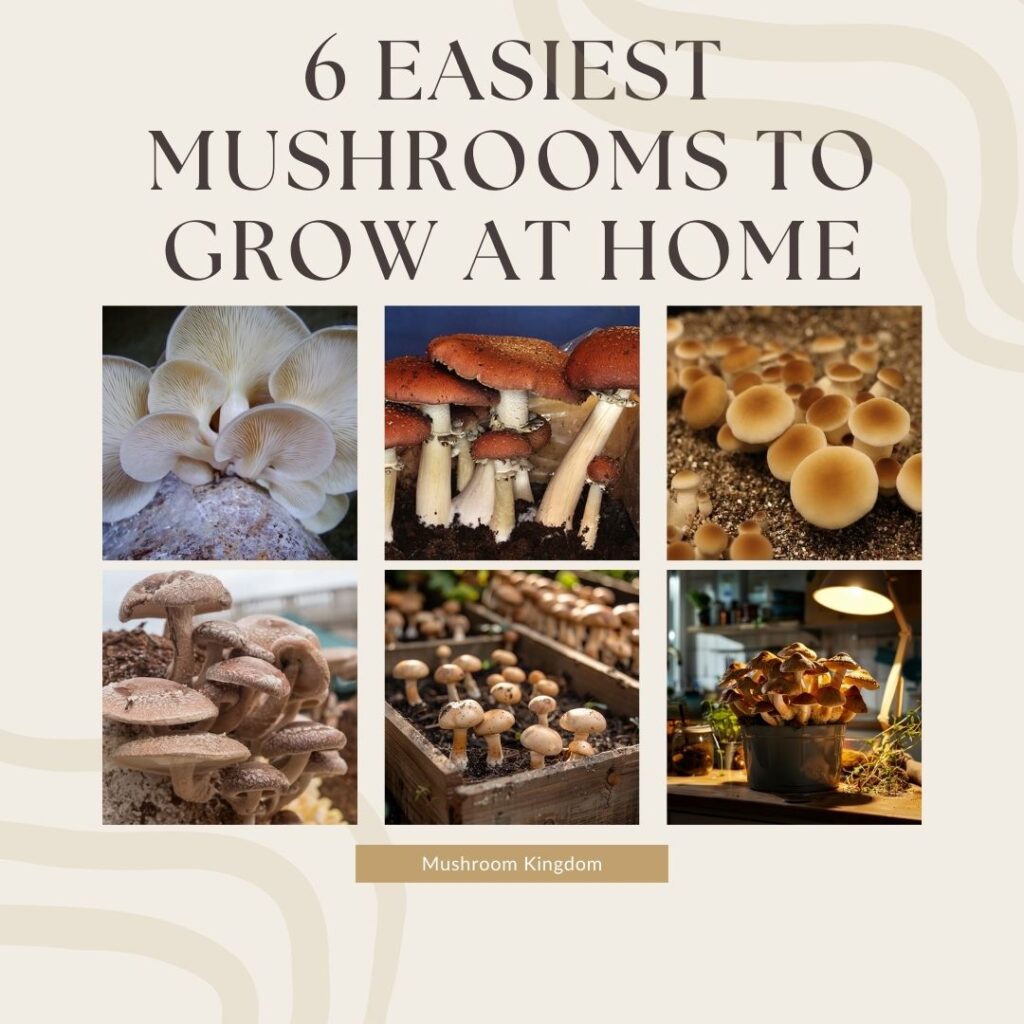Indoor mushroom cultivation is a rewarding yet delicate process. One of the most significant challenges faced by mushroom growers is the occurrence of mould and bacteria contamination.
These unwelcome intruders can jeopardize an entire crop if not managed effectively.
Here, we explore the common issues with mould and bacteria in indoor mushroom growth and provide comprehensive strategies for prevention and management.

Understanding the Threat
Mould Contamination
Mould contamination, especially from green and black varieties like Trichoderma and Aspergillus, is a common issue in mushroom cultivation.
These moulds aggressively compete with mushroom mycelium for nutrients and space, often outgrowing and overtaking the mushroom culture. Visible signs include discoloured spots on the substrate and a distinctive musty smell.
Bacterial Contamination
Bacterial issues, though less visible than mould, are equally destructive.
Bacteria such as Pseudomonas can thrive in overly wet or poorly sterilized environments, causing sour rot and a slimy, foul-smelling substrate.
Understanding these reasons helps in developing strategies to prevent bacterial contamination and ensure healthy growth. Here are some key factors you should take into consideration.
Mould And Bacterial Prevention
Sterilization and Pasteurization
Ensuring the substrate is properly sterilized or pasteurized is critical. Sterilization typically involves autoclaving the substrate at high temperatures to kill any existing spores or bacteria. Pasteurization uses slightly lower temperatures and is usually adequate for non-sterile growing environments.
Also, all tools and containers should be sterilized before use. This includes growing trays, knives, and inoculation tools.
Environmental Control
Maintaining optimal humidity levels (typically between 85–95% for most mushroom species) is essential, but it’s equally important to ensure proper air circulation. Stagnant air can promote mould and bacterial growth and destroy your mushrooms.
The same stands for the temperature. Keeping the growing area at a consistent temperature that is ideal for your specific mushroom species is crucial. Many contaminants thrive at higher temperatures, so monitoring and adjusting the environment can prevent their proliferation.
Water Quality
Water quality and distribution significantly impact mushroom cultivation. Use clean, contaminant-free water and avoid overwatering, which can create conditions conducive to bacterial growth. Proper irrigation techniques help maintain the delicate balance required for healthy mushroom development.
Personal Hygiene
Before getting in contact, always wash your hands thoroughly and consider wearing gloves and clean clothing when handling substrates or mushrooms. This minimizes the introduction of contaminants.
Quarantine new cultures or substrates until they are confirmed free of contaminants to prevent potential issues from spreading.
Lighting
Lighting conditions also influence mushroom growth. While most mushrooms do not require direct light, some species benefit from low-intensity light exposure during specific growth stages. Research the lighting needs of your chosen mushroom species and adjust your setup accordingly.
PH Level
In addition to these factors, the pH level of the substrate is important. Most mushrooms prefer a slightly acidic environment, typically between pH 5.5 and 6.5. Regularly test and adjust the pH of your substrate to create an optimal growing environment.
Another critical factor is the type of container or growing medium used. Choose containers that provide adequate space for mycelial growth and allow for proper air exchange. Popular options include plastic bags, trays, and bottles designed for mushroom cultivation.
Quality Control of Spawn
Always be sure to source reliable spawns for your mushrooms. Using high-quality, contaminant-free spawn from reputable suppliers can significantly reduce the risk of introducing mould and bacteria.
What also reduces the risks is the regular inspection. Continuously inspect spawn jars or bags for signs of contamination before using them.
Management Techniques
Early Detection and Isolation
Frequent monitoring of your growing area is essential for early detection of mould or bacterial issues. Regularly inspect the substrate for changes in color, texture, and smell.
Catching these signs early allows you to address problems before they spread. If you detect contamination, immediately isolate the affected area. This step is crucial to prevent the spread of contaminants to healthy substrates.
Removal and Disinfection
Remove any infected substrate and dispose of it safely. Do not attempt to salvage contaminated sections, as this can exacerbate the problem.
Clean and disinfect the growing area thoroughly after removing contaminated materials. Use a solution of bleach or hydrogen peroxide to kill any remaining spores or bacteria.
Enhance Air Circulation
Good air circulation is vital in preventing the buildup of contaminants. Ensure your growing area has adequate ventilation. Use fans or ventilation systems to keep air moving and prevent stagnant conditions, which can promote mould and bacterial growth.
Monitor Substrate Moisture Levels
Proper moisture levels in the substrate are crucial. Overly wet substrates create ideal conditions for bacterial growth. Regularly check moisture levels and adjust watering practices accordingly. Use clean, contaminant-free water and avoid overwatering to maintain a healthy balance.
Adjust Environmental Conditions
Modify humidity and temperature. Sometimes, a slight adjustment in environmental conditions can halt the spread of contaminants. Lowering humidity temporarily and increasing airflow can be beneficial.
Also, improve air quality. Installing HEPA filters can help reduce airborne contaminants, maintaining a cleaner growing environment.
Implement a Rotation Schedule
Implementing a rotation schedule for growing areas can help manage and prevent contamination. By rotating crops and allowing certain areas to rest and undergo thorough cleaning, you can reduce the buildup of pathogens and maintain a healthier growing environment.
Tools And Equipment For Mauld And Bacteria Prevention
These tools help maintain a clean environment, monitor conditions, and prevent contamination. Here are essential tools and devices to consider:
1. Autoclave
An autoclave is essential for sterilizing substrates and tools. It uses high-pressure steam to kill bacteria, mould spores, and other pathogens, ensuring a sterile growing medium.
2. Pasteurization Equipment
For non-sterile environments, pasteurization equipment such as hot water baths or steam pasteurizers is used to treat substrates. These devices maintain the necessary temperatures to reduce microbial load without complete sterilization.
3. HEPA Filters
High-Efficiency Particulate Air (HEPA) filters are crucial for maintaining air quality in the growing area. They remove airborne mould spores and bacteria, reducing the risk of contamination. HEPA filters can be used in air filtration systems or portable air purifiers.
4. Laminar Flow Hood
A laminar flow hood provides a sterile work environment by directing HEPA-filtered air across the work surface. It is particularly useful during inoculation and other processes that require a contaminant-free area.
5. Humidity Control Devices
Maintaining optimal humidity levels is vital to prevent mould and bacterial growth. Humidifiers, dehumidifiers, and hygrometers help control and monitor humidity levels within the desired range, typically between 85–95% for most mushroom species.
6. Thermometers and Thermostats
Temperature control is essential to inhibit the growth of contaminants. Digital thermometers and thermostats help monitor and regulate the temperature of the growing environment, ensuring it remains within the ideal range for your specific mushroom species.
7. pH Meters
Mushrooms generally prefer a slightly acidic substrate, with pH levels between 5.5 and 6.5. A pH meter allows you to monitor and adjust the substrate’s pH, creating an unfavorable environment for bacterial growth.
Conclusion
Preventing and managing mould and bacterial contamination in indoor mushroom cultivation requires a multifaceted approach. It requires a methodical approach, and if you take the right steps, it leads to healthy growth and successful harvests.

